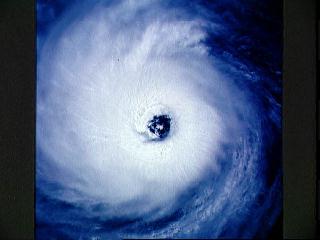
Program in Atmospheres, Oceans, and Climate
Massachusetts Institute of Technology
The maps shown here represent the minimum sustainable surface pressure (mb) and maximum sustainable surface wind speed (m/s) in tropical cyclones. The calculations are performed using daily mean atmospheric conditions and weekly-updated sea surface temperatures, from the sources mentioned above. Potential intensities are calculated for each day in the data set and then averaged over each month to obtain monthly mean values. Quantities displayed include the monthly mean intensities, averaged over all the years in the data set, their standard deviation, the 90th percentile of intensity (such that 10% of all the individual daily mean values in the given month represent greater intensity than this number), and the largest 90th percentile intensity within 1000 km of the point in question. This latter calculation is provided to take into account intense storms that move rapidly through a strong gradient in potential intensity and may thus have an actual intensity in excess of the local potential intensity. (For example, hurricanes moving rapidly up the U.S. east coast may strike New York or Boston with actual intensities that greatly exceed the small local values of potential intensity.) Extreme care should be taken in interpreting these maps as there are few regions where storms can be expected to move rapidly enough to sustain intensities well in excess of potential intensities.
Maps showing the lowest monthly mean pressure and highest monthly mean wind speed in each year are also provided.
The Table presents data for particular cities and regions. Caution should be used in interpreting the 1000 km values, as there are many places for which this is inappropriate. For example, it is extremely unlikely that an intense storm could move up the west coast of North America fast enough to affect San Diego with anything close to full intensity. Moreover, these values are susceptible to anomalous point values of potential intensity.
The method used in calculating these quantities is described in a separate document. Note, however, that the calculations done here take into account the contribution to hurricane intensity from dissipative heating in the boundary layer. This changes the denominator of equation (1) in the document from T_s to T_o. Experience using potential intensity estimates based on climatology indicate that few, if any, storms will ever exceed the potential intensity value; most storms will not achieve their potential intensity (see figure).
The research that enabled the construction of these maps was supported by the National Science Foundation under Grant ATM-9724987.